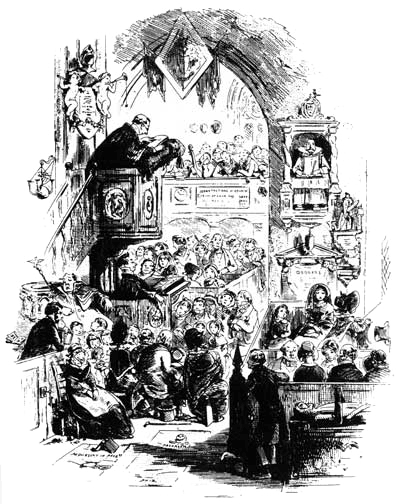Reading Questions
Reading Answer Explanations
2014-2015 Specialized High Schools Student Handbook
(Questions in new window/tab)

2013-2014 Specialized High Schools Student Handbook
(Questions in new window/tab)

2014-2015 Specialized High Schools Student Handbook
(Answers in new window/tab)

2013-2014 Specialized High Schools Student Handbook
(Answers in new window/tab)

PASSAGES
Passage 1:

When you eat an orange, your perception of its flavor comes from the combination of its aroma and its taste. Taste buds, the sensory receptors on the tongue, convey information to the brain about chemicals in food while the food dissolves in saliva. The sense of smell comes into play when the olfactory nerve in the nasal passages senses even very low concentrations of food chemicals in gaseous form. The sense of smell has
10
a larger role in tasting flavors than most people realize—that is, until they have a stuffy nose and nothing tastes good. If taste and smell depend on our detection of food chemicals, one might expect that chemists would be able to duplicate the flavors of foods. In fact, a surprising number of popular food flavors can now be reproduced in the laboratory, and even more are on the way. Orange, perhaps the most popular
20
flavor worldwide, has been reproduced successfully. So have some national favorites, including cashew (Latin America), paprika (Hungary), and fruit-flavored “Jamaica” (Mexico). Synthetic flavors are not limited to flavoring food; they are also added to mouthwashes, toothpaste, beverages, and other consumer products. Only a small proportion of the chemical components occurring naturally in foods
30
actually contribute to their flavor. To identify these critical components, scientists use a gas chromatograph to separate a food into its basic chemical constituents. Flavor experts, called flavorists, then attempt to isolate those chemicals that are essential to the distinctive flavor of a food. Mechanical techniques have been developed to capture the aromas of food as it is being prepared—
such as bread while it bakes—and distill the
40
essential chemicals from these essences. If successful, flavorists use their highly developed senses of taste and smell to attempt to produce acceptable flavorings that are chemically identical to, but purer than, flavors that are naturally present in unprocessed food.
Although American consumers claim to want “natural” flavors in their food, taste tests demonstrate that they often prefer
50
their synthetically produced counterparts. Artificial flavors tend to be stronger and less subtle than natural flavors. For example, many Americans prefer a soft drink created with artificial flavors, such as orange soda, over an “all-natural” soda flavored with real oranges, which may taste weak in comparison. In fact, some flavorists worry that consumers will develop such a strong taste for artificial flavors that natural flavorings,
60
usually more expensive than their artificial counterparts, will become scarce. Researchers have not always been successful in their efforts to duplicate natural flavors. Some popular flavors, such as coffee, strawberry, and chocolate, have proven virtually impossible to reproduce. The difficulty in creating a flavor like chocolate, experts say, is its complexity—a mysterious combination of sweet and bitter that excites the taste
70
buds in an unusual and satisfying way.
Passage 2:

In many cultures, the ugly physical appearance of the bat has given it an unearned reputation as an evil and vicious bearer of diseases. Many people, for example, believe that the American brown bat carries rabies. In fact, it is no more likely to transmit the disease than other animals, such as dogs. Brown bats actually help to prevent disease, not spread it. The basis of their diet is the mosquito, an insect that transmits
10
more diseases than all the bats in the world combined. A group of bat species known as flying foxes or fruit bats serve another important purpose, as a critical link in the reproduction of many tropical trees and shrubs. In the tropical rain forests of Africa, Asia, and Australia, plants such as avocadoes, date trees, cashews, and mangoes rely in part on flying foxes for pollination. One of Africa’s
20
most valuable hardwood trees, the iroko, is entirely dependent on this type of bat for pollination. Flying foxes feed on flowers, fruit, and nectar, flying from one plant to another and pollinating the plants as they go, much as bees do in other parts of the world. Because they are sloppy eaters, flying foxes drop fruit as they go, dispersing the seeds. They can travel great distances and convey pollen and seeds far from their
30
origins, thereby maintaining the genetic biodiversity within a plant species. Because of the importance of bats’ role in pollination and seed distribution, scientists consider them a keystone in the ecosystems of tropical rain forests. Without bats, many bat-pollinated plants—and the animals that depend on them for food and shelter—would be threatened to the point of extinction. Areas outside the rain forests would be
40
impacted as well, since the rain forests’ lush vegetation replenishes the oxygen in the global atmosphere.
Unfortunately, many people are determined to get rid of bats. Flying foxes are at particular risk. In the wild, they feed on wild fruit, but when their rain forest habitat is reduced by conversion into farmland or residential areas, they occasionally raid cultivated fruit trees, spoiling the crops.
50
Several flying fox species have been hunted to extinction, while others are seriously endangered.
Conservation groups and government agencies in many countries are attempting to change people’s attitudes toward bats. When people learn that bats pollinate the trees and crops that provide their livelihood, they are more likely to appreciate and protect the bats in their area. There
60
are also effective, non-harmful ways to deal with troublesome bats. Orchard owners can cover their trees with netting to discourage the bats, and there are humane methods for moving bats from places where they are not wanted. For the sake of the rain forests, and for life forms everywhere that depend on them, it is urgent that people apply a new twist to an old adage, and realize that
70
ugliness is only skin deep.
Passage 3:

The British novelist Charles Dickens is well known for the colorful and eccentric characters he created in his many novels. But one of his books, David Copperfield, seems to have a great deal to do with fact as well as fiction. After attempting to write his autobiography, Dickens abandoned the project and began to work on a novel, the plot of which was loosely based on his own boyhood
10
experiences. Apparently, it was easier for him to weave the events of his own life into the fiction of David Copperfield than to write about them in nonfiction. Some of Dickens’ most troubling memories involved a job he held in 1824 as a 12-yearold child. Because his family was deeply in debt, he was forced to quit school and go to work in a London factory, pasting labels on pots of shoe polish. Young Charles lived in a
20
boardinghouse, using his meager wages to support himself and to help pay his family’s debts. He worked in the dreary, run-down factory six days a week from 8:00 a.m. to 8:00 p.m. Such long hours were not unusual at the time, for children or adults, but Dickens was miserable during the entire four months he spent working at the factory. Even when the family finances improved, the boy continued to work at the factory
30
until his father quarreled with Dickens’ boss, who promptly dismissed the son. Charles was upset at being fired, but relieved to be out of the factory. Thus he felt betrayed when his mother, anxious for the boy’s weekly wage, succeeded in making peace and getting Dickens’ job back for him.
The father, however, now sided with his son and the boy was sent back to school. “I know how these things have worked together to make me what I am,” Dickens
40
later wrote, but he never forgot that his mother was eager for him to return to work. As an adult, Dickens always remembered the shame and humiliation he felt during those months at the factory. For years afterward, whenever in London, he could not go near the sites of the factory and boardinghouse, going out of his way to avoid those painful reminders of his past. In fact, Dickens never told his wife and children
50
about his childhood work experience. It was only after his death that they heard of it from a family friend whom Dickens had confided in. Instead, Dickens expressed his feelings by giving his fictional “other self,” David Copperfield, a job similar to the one he had so hated. In the novel, ten-year-old David is forced by his harsh stepfather to work as a bottle washer in a factory. Young David,
60
who “suffered exquisitely” as a child manual laborer, was apparently Dickens’ way of dealing with his own past. David Copperfield was to become Dickens’ most popular novel, and Dickens himself called it his “favorite child.”
Passage 4:

Anyone who has watched TV news coverage of a hurricane has seen how destructive wind energy can be. But the power of the wind can also be put to constructive use. From sailboats to old-fashioned windmills to the high-tech, modern wind machines called turbines, people have devised ways to harness wind energy for thousands of years. The first known attempt to use wind power was the sailboat. Ancient shipbuilders
10
understood how to use forces like lift and momentum, even if they could not explain those forces scientifically. The principles behind sailing led to the development of the windmill. The first known windmills originated in Persia, an area that is now Iran, as early as a.d. 500. They were created to help with the demanding chores of grinding grain and pumping water. By the tenth century, windmills were used throughout
20
central Asia; they were used in China as early as the thirteenth century. In Europe, windmills came into widespread use during the twelfth century. As in other parts of the world, they were used for milling grain and pumping water. Windmills replaced the water wheel, which was turned by the movement of running water over paddles mounted around a wheel. The windmill was more adaptable and efficient
30
than the water wheel and quickly became popular. For example, Holland, famous for its windmills, used the machines to pump seawater away from low-lying coastal bogs. This allowed the Dutch to reclaim large areas of land from the sea. Windmills eventually became sophisticated enough for use in a broad range of work, from sawmills and drainage pumping to processing goods such as dyes, tobacco, cocoa, and spices.
40
In the 1700s, as steam engines gained in popularity, the use of wind machines for many types of work declined. However, windmills still played an essential role in pumping water on farms throughout the American West and Midwest. Between 1850 and 1970, over six million small windmills were installed on American farms for watering livestock and meeting other water needs. In many remote areas even today, livestock
50
production would be impossible without the use of windmills to provide water. Beginning in the late nineteenth century, windmills were adapted to generate electricity. During the 1930s and ’40s, thin-bladed windmills provided electricity for hundreds of thousands of farms across the United States. By the 1950s, however, power lines connected almost every household in America to a central power source,
60
such as a utility company. After that, there was little need for wind turbines until the energy crisis of the 1970s. At that time, interest in wind turbines was renewed due to rising energy costs and concern about the future availability of fossil fuels such as oil, coal, and natural gas. The last several decades have seen the development of “wind farms,” clusters of wind turbines that generate electricity. Efficient, clean, and
70
fairly inexpensive to operate, wind farms may prove to be as important in the future as earlier windmills were in the past.
Passage 5:

Almost one hundred fifty years ago, Charles Darwin, the famous British naturalist, proposed a startling new theory about the cause of human emotions. Facial expressions, he argued, are more than the visible signs of an emotion; to some extent they actually cause the emotion. For example, a person’s smile reflects a feeling of happiness, but it also helps to produce that feeling. The theory that facial expressions
10
contributed to emotions was controversial and, at the time, impossible to prove. Eventually it lost favor, and for more than a century people’s facial expressions were assumed to be the result, not the cause, of their feelings. Theories change, however. Within the last few decades, psychologists have been investigating the notion that we can put smiles in our hearts by first putting them on our
20
faces. In a research study, volunteers were asked to say words that placed their facial muscles into either smiles or frowns. The purpose of the task was not explained. After the experiment, the volunteers who said words like “cheese” were measurably happier than those who said words like “few.” To explain these results, the researchers theorized that there is a relationship
30
between facial expressions and the temperature of the blood entering the brain. According to their theory, the muscle contractions produced by a facial expression raise or lower the temperature of the blood
that flows through the person’s face. The change in temperature is slight—less than one degree Celsius. The blood vessels in the face connect to the carotid artery, which leads to the hypothalamus, an area of the
40
brain believed to regulate emotions. The researchers theorized that warmer blood, which is associated with frowning or scowling, leads to feelings of unhappiness. A smile, which is created by a different set of muscles, lowers the blood temperature and tends to produce a feeling of happiness. In another study, volunteers were told exactly which facial muscles to contract. For example, volunteers were told, “Raise
50
your eyebrows, open your eyes wide, tuck in your chin, and let your mouth relax” (the facial expression associated with fear). The volunteers were not told which emotion they were mimicking. As they produced the muscular movements of a particular emotional expression, they tended to experience that emotion. For example, while making a fearful expression, they reported feeling more fear than anger, sadness, or disgust.
60
Acceptance of the research relating emotions to facial expressions, especially the blood temperature theory, is far from universal.
However, some psychologists hope that the phenomenon may be useful in treating mild depression. They do agree, though, that facial expressions are not the most important causes of emotion. Encouraging people to smile while they are mourning, for example, would do little to
70
lessen their grief.
